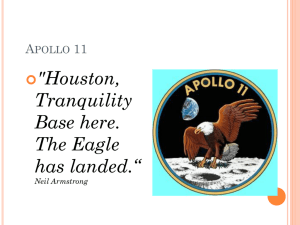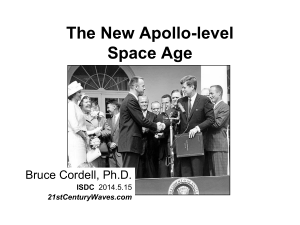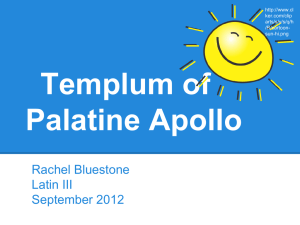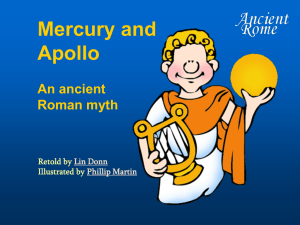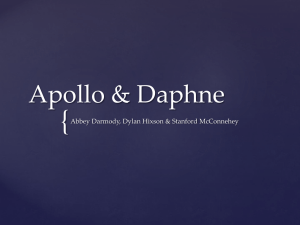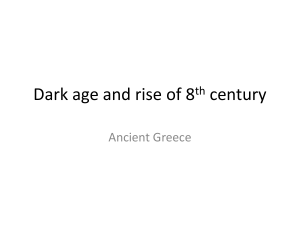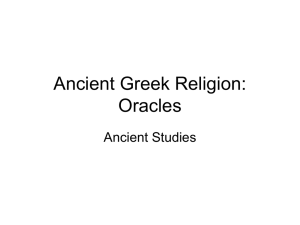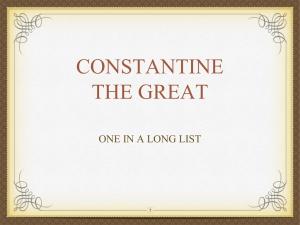Apollo presentation tess
advertisement
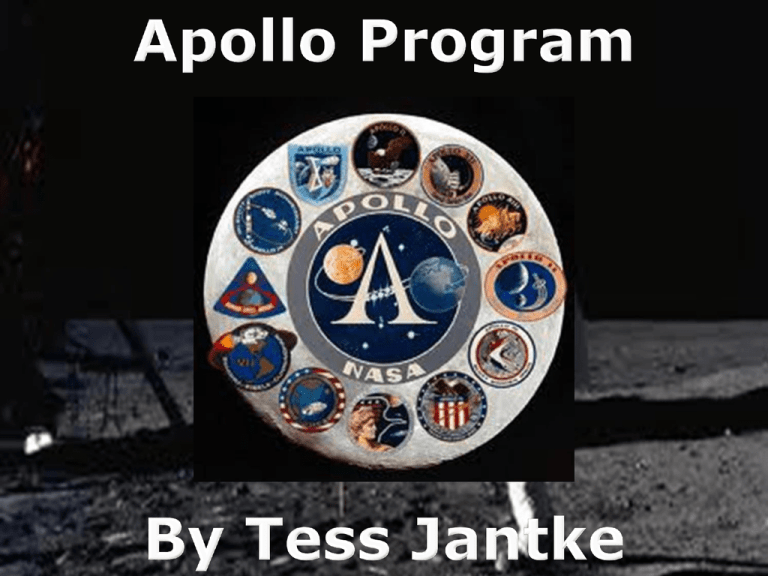
The goal of the Apollo Program was to send astronauts to the moon or outer-space. The Apollo started on No. 1 to No. 17 but last year a group of men made a scary/spooky movie called ‘Apollo 18’. Apollo 11 was the really big mission because Neil Armstrong and Buzz Aldrin got to walk on the moon but Michael Collins had to stay in the Saturn V rocket. Neil Armstrong was the first person to walk on the moon on 20th July in 1969. Buzz Aldrin was the second person to walk on the moon. After that 10 other people walked on the moon so there was 12 people who walked on the moon altogether. Neil Armstrong - Apollo 11 - July, 1969 Edwin "Buzz" Aldrin - Apollo 11 - July, 1969 Charles "Pete" Conrad - Apollo 12 - November, 1969 (may have been scheduled to land again on Apollo 20, though unlikely as he had already walked on the Moon) Alan Bean - Apollo 12 - November, 1969 Alan Shepard - Apollo 14 - February, 1971 Edgar Mitchell - Apollo 14 - February, 1971 David Scott - Apollo 15 - July, 1971 James Irwin - Apollo 15 - July, 1971 John Young - Apollo 16 - April, 1972 (also on Apollo 10, without landing) Charles Duke - Apollo 16 - April, 1972 Eugene Cernan - Apollo 17 - December, 1972 (also on Apollo 10, without landing) Harrison Schmitt - Apollo 17 - December, 1972 The Saturn V rocket is the rocket that travelled to the moon with at least three men on the Apollo missions. Saturn V was a really fast rocket because it had a such a lot of energy, fuel and power. The last Saturn V flew in 1973. All the parts of the Saturn V rocket are: Launch Escape Tower, Service Module, Command Module, Lunar Module, S-IVB Third stage and S-II Second Stage. Height: 110.6 meters (363 feet) Diameter: 10.6 meters (33 feet) Total Mass: 3,008,500 kilograms (6,699,000 lb) Payload (Earth Orbit): 118,000 kilograms (260,000 lb) Payload (Lunar Orbit): 47, 000 kilograms (103,000 lb) The captain was Neil Armstrong, the LMP was Edwin ‘Buzz’ Aldrin and the CMP was Michael Collins and they were travelling to the moon on April 11th of 1970. On Apollo 13 there was a really big explosion. The big explosion was the oxygen tank. The oxygen was spraying out white stuff called oxygen. The only solution was to get into the Lunar Module. But they weren’t allowed to use the power because they got tolled not to by Houston. The Lunar Module designed for 2. They fit the three of them in. To get back to earth safely, they had to turn the power for a little bit to get a head start to circle around the moon because that was the way that it was going. To get back to earth safely, they had to turn the power for a little bit to get a head start to circle around the moon because that was the way that it was going. Because of the head start that made it a little bit easy to get back home. It took about 3 days to get back home to earth safely. Because of the boost they made it home and landed in the water (with a parachute) like every other mission does. One of the wasn’t happy when they got home because he didn’t get to walk on the moon. 2 of the men stayed as astronauts and the other didn’t want to have anything to do with it. 1 of the men who stayed as an astronauts, became a politician and died after that and the other got to go into outer-space again. Australia was involved in the Apollo Program because In one of the Apollo mission, they asked Australia to use 2 of their radio telescopes because they were considered the best in the world. The telescopes were from Canberra, (Honeysuckle creek) if they didn’t have them then they wouldn’t be able to communicate with Neil Armstrong and Buzz Aldrin and all the other people the walked on the moon. It was the Apollo 10 43rd anniversary on the 26th of May 1969 in Honeysuckle creek. They also requested for a backup station from New South Wales just in case the other 2 stations failed. http://en.wikipedia.org/wiki/Apollo_program http://nssdc.gsfc.nasa.gov/planetary/lunar/apollo.html http://www.nasa.gov/mission_pages/apollo/ http://history.nasa.gov/apollo.html http://spaceflight.nasa.gov/history/apollo/index.html http://www.google.com.au/search?q=apollo+program &hl=en&prmd=imvnsb&tbm=isch&tbo=u&source=univ &sa=X&ei=q6O5T7t94_GYBfPL7dAJ&sqi=2&ved=0CHEQ sAQ&biw=1024&bih=505 http://airandspace.si.edu/collections/imagery/apollo/a pollo.htm http://www.astronautix.com/project/apollo.htm
